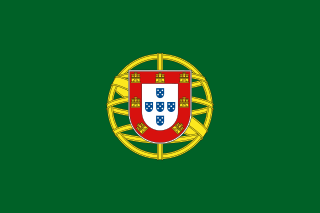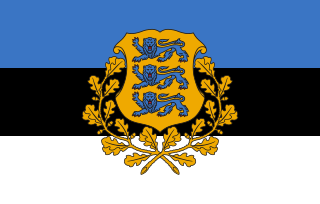Related Research Articles

The Westminster system or Westminster model is a type of parliamentary government that incorporates a series of procedures for operating a legislature. This concept was first developed in England.
Republicanism in Australia is a popular movement to change Australia's system of government from a constitutional parliamentary monarchy to a republic, replacing the monarch of Australia with a president. Republicanism was first espoused in Australia before Federation in 1901. After a period of decline after Federation, the movement again became prominent at the end of the 20th century after successive legal and socio-cultural changes loosened Australia's ties with the United Kingdom. A majority of Australians support ending their ties with the British monarchy, and replacing that with a republic.
The Republic Advisory Committee was a committee established by the then Australian Prime Minister Paul Keating in April 1993 to examine the constitutional and legal issues that would arise were Australia to become a republic. The committee's mandate was to "prepare an options paper describing 'the minimum constitutional changes necessary to achieve a viable Federal Republic of Australia, maintaining the effect of our current conventions and principles of government'." The committee was asked to consider issues such as
In Australian history, the term Constitutional Convention refers to four distinct gatherings.

The Australian Republic Movement (ARM) is a non-party-partisan organisation campaigning for Australia to become a republic. ARM and its supporters have promoted various models of a republic including parliamentary republic and it is, again, reviewing its preferred model.

The president of Portugal, officially the president of the Portuguese Republic, is the head of state and highest office of Portugal.
An indirect election or hierarchical voting is an election in which voters do not choose directly among candidates or parties for an office, but elect people who in turn choose candidates or parties. It is one of the oldest forms of elections and is used by many countries for heads of state, cabinets, heads of government, and/or upper houses. It is also used for some supranational legislatures.

Canadian republicanism is a movement for the replacement of the monarchy of Canada and a monarch as head of state with a parliamentary republic and a democratically-selected Canadian as head of state. Republicans are driven by various factors, such as a perception of inequality in the concept of excluding all but members of the royal family from the position or the argument that Canadian independence will not be achieved until Canadians can choose their own head of state independently and democratically.
Referendums have been held in Australia to approve parliament-proposed changes to the Constitution of Australia or to the constitutions of states and territories.

The Australian republic referendum held on 6 November 1999 was a two-question referendum to amend the Constitution of Australia. The first question asked whether Australia should become a republic with a President appointed by Parliament following a bi-partisan appointment model which had been approved by a half-elected, half-appointed Constitutional Convention held in Canberra in February 1998. The second question, generally deemed to be far less important politically, asked whether Australia should alter the Constitution to insert a preamble. For some years opinion polls had suggested that a majority of the electorate favoured a republic. Nonetheless, the republic referendum was defeated, partly due to division among republicans on the method proposed for selection of the president and dissident republicans opposed the president to have strong executive power.

The president of the Republic of Estonia is the head of state of the Republic of Estonia. The current president is Alar Karis, elected by Parliament on 31 August 2021, replacing Kersti Kaljulaid.
Australians for Constitutional Monarchy (ACM) is a group that aims to preserve Australia's current constitutional monarchy, with Charles III as King of Australia. The group states that it is a non-partisan, not-for-profit organisation whose role is "To preserve, to protect and to defend our heritage: the Australian constitutional system, the role of the Crown in it and our Flag".

Republicanism in New Zealand is the political position that New Zealand's system of government should be changed from a constitutional monarchy to a republic.
The Bi-partisan appointment republican model is a proposal for Australian constitutional reform. If approved at referendum, the model would have established Australia as a republic with a Head of State appointed by the Australian Federal Parliament. The model was put to the people at the November 1999 republican referendum and was defeated by 54.4% of voters.
A process model is, in the context of the republic debate in Australia, a model for the process by which the questions surrounding whether and how Australia should become a republic may be answered. A number of process models have been processed. Proposed process models are a subject of debate within the Republicanism movement. Such debate usually surrounds whether the people should be asked to choose between the current system and a general republican system of government, one specific republican system of government, or multiple alternative republican systems of government.
Historically, the political post of Prime Minister, officially called President of the Council of Ministers, existed in Brazil in two different periods: from 1847 to 1889 and from 1961 to 1963.

The 1998 Australian Constitutional Convention was a Constitutional Convention which gathered at Old Parliament House, Canberra from 2 to 13 February 1998. It was called by the Howard Government to discuss whether Australia should become a republic. The convention concluded with "in principle support" for an Australian republic and proposed a model involving appointment of the head of state by Parliament. The model was put to a referendum in November 1999 and rejected by the Australian electorate.

A constitutional referendum was held in Armenia on 6 December 2015. Its amendments to the constitution put the country on a course from having a semi-presidential system to being a parliamentary republic, with the changes beginning to take place during the 2017–18 electoral cycle. The referendum passed with 66.2% of voters supporting it. Voter turnout was 50.8%, passing the 33% threshold to validate the results.

Semi-parliamentary system can refer to either a prime-ministerial system, in which voters simultaneously vote for both members of legislature and the prime minister, or to a system of government in which the legislature is split into two parts that are both directly elected – one that has the power to remove the members of the executive by a vote of no confidence and another that does not. The former was first proposed by Maurice Duverger, who used it to refer to Israel from 1996-2001. The second was identified by German academic Steffen Ganghof.

The president of Barbados is the head of state of Barbados and the commander-in-chief of the Barbados Defence Force. The office was established when the country became a parliamentary republic on 30 November 2021. Before, the head of state was Elizabeth II, Queen of Barbados, who was represented on the island by a governor-general. The first and current president is Sandra Mason, who previously served as the last governor-general.
References
- ↑ Vizard, Steve, Two Weeks in Lilliput: Bear Baiting and Backbiting At the Constitutional Convention (Penguin, 1998, ISBN 0-14-027983-0)
- Road to a Republic (2004, Senate Printing Unit)
- Six Models for an Australian Republic https://web.archive.org/web/20080720233328/http://www.republic.org.au/6models/6models.pdf
- McGarvie R, Democracy: Choosing Australia's Republic, 1999